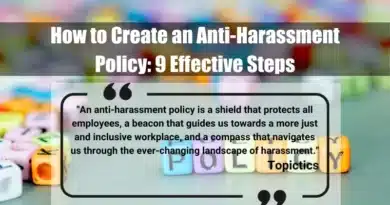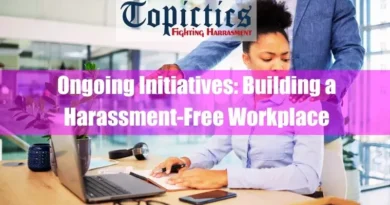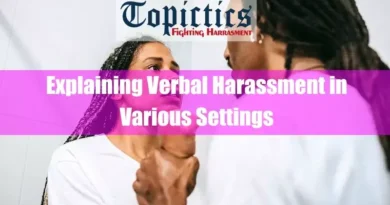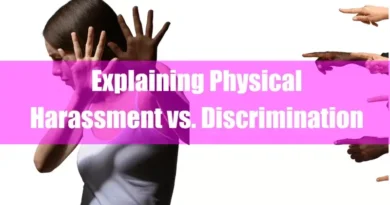Understanding Microaggressions and Its Categories
Takeaways
| Key Points |
|---|
| Microaggressions are subtle, often unintentional actions or comments that convey negative messages to individuals based on their marginalized group identity, affecting them in verbal, nonverbal, or environmental ways. |
| Types of microaggressions include microassaults, which are intentional and overtly harmful, such as racial slurs, and microinsults, which are unintentional yet demeaning, like telling a woman she is “articulate for a woman.” |
| Microinvalidations dismiss or negate the experiences of marginalized groups, such as telling someone they are “overreacting” about racial inequality. |
| These interactions are deeply rooted in social power dynamics, often stemming from unconscious biases, and can occur in various settings, including workplaces, schools, and public spaces. |
| The impact of microaggressions is significant, leading to negative psychological effects like anxiety, depression, and a diminished sense of self-worth, particularly when compounded by intersectionality, where individuals face multiple forms of discrimination based on race, gender, or other factors. |
Introduction to Microaggressions
Definition of Microaggressions
Microaggressions are subtle, often unintentional actions or comments that convey derogatory or negative messages to individuals based on their membership in a marginalized group. These acts can be verbal, nonverbal, or environmental and are typically brief, daily exchanges that communicate hostile, derogatory, or negative slights and insults.
Although they may seem insignificant to those who perpetrate them, microaggressions can profoundly affect the individuals who experience them.

Types of Microaggressions (Verbal, Nonverbal, Environmental)
Microaggressions manifest in various forms:
- Verbal Microaggressions include comments or questions that, intentionally or not, demean a person’s identity. For example, asking a person of color, “Where are you really from?” implies that they are an outsider, even if they were born in the same country as the person asking.
- Nonverbal Microaggressions involve body language or actions that communicate a demeaning or exclusionary message. This can include gestures like a person clutching their purse tightly when passing by someone from a marginalized group, which implies distrust.
- Environmental Microaggressions are more systemic and occur in the physical or cultural environment. This might include lacking representation in media or workplace settings, such as a lack of people of color in leadership positions or gender-neutral restrooms.
Historical Context and Evolution of the Term
The concept of microaggressions was first introduced by psychiatrist Dr. Chester M. Pierce in the 1970s, focusing primarily on subtle forms of racism. Over the years, the term has evolved to encompass a broader range of subtle, everyday interactions that perpetuate discrimination and prejudice against various marginalized groups.
Dr. Derald Wing Sue, a prominent psychologist, further expanded on this concept in the early 2000s, categorizing microaggressions into distinct types and highlighting their pervasive impact on the mental health and well-being of those targeted.
Categories of Microaggressions

Microassaults
Definition and Characteristics
Microassaults are explicit derogatory actions or statements that are intentional and meant to harm or demean a person based on their marginalized identity.
These acts are akin to what is traditionally considered outright discrimination or hate speech. Still, they are often expressed in less overt ways.
Examples in Everyday Life
Examples of microassaults include racial slurs, derogatory language about a person’s sexual orientation, or deliberately excluding someone from a group or activity because of their gender or ethnicity.
While these actions are more direct than other forms of microaggressions, they are still often dismissed by perpetrators as jokes or harmless remarks.
Impact on Targeted Individuals
The impact of microassaults can be severe, leading to immediate feelings of anger, shame, or fear. Over time, repeated exposure to microassaults can contribute to chronic stress, anxiety, and depression, as well as a deep sense of alienation and isolation.
Microinsults
Definition and Characteristics
Microinsults are comments or behaviors that convey rudeness or insensitivity and demean a person’s heritage or identity. Unlike microassaults, microinsults are often unintentional and are embedded within seemingly positive statements or behaviors.
Common Manifestations in Different Settings
In the workplace, a common microinsult might tell a female colleague that she is “very articulate for a woman,” implying that women are generally not expected to be well-spoken. A teacher might unconsciously call on male students more frequently than female students in educational settings, reinforcing gender stereotypes about intelligence and competence.
Consequences of Self-Esteem and Mental Health
Microinsults can chip away at an individual’s self-esteem and sense of belonging. Over time, these experiences can lead to feelings of inadequacy, frustration, and a diminished sense of self-worth.
The cumulative effect of microinsults can be as damaging as more overt forms of discrimination, contributing to long-term mental health issues.
Microinvalidations
Definition and Characteristics
Microinvalidations are comments or actions that negate or dismiss marginalized individuals’ thoughts, feelings, or experiences. These invalidations are often subtle and can be difficult to recognize, even by the person committing them.
How Microinvalidations Dismiss Experiences of Marginalized Groups
Examples of microinvalidations include telling someone who expresses concern about racial inequality that they are “overreacting” or insisting that “everyone is equal” in response to a discussion about systemic discrimination.
These statements invalidate the lived experiences of marginalized individuals and dismiss the real challenges they face.
Psychological Impact and Coping Strategies
Microinvalidations can lead to self-doubt, confusion, and feelings of invisibility. Individuals who experience microinvalidations may begin to question the validity of their own experiences and feelings, which can contribute to mental health challenges like anxiety and depression.
Coping strategies for microinvalidations include seeking support from others who understand the experiences of marginalization, developing assertive communication skills to address invalidating comments, and engaging in self-care practices to maintain mental well-being.
Psychological Impact of Microaggressions

Short-term and Long-term Psychological Effects
Microaggressions, though often subtle, have significant psychological effects on those who experience them. In the short term, microaggressions can lead to immediate feelings of anger, frustration, and sadness.
Repeated exposure can result in long-term psychological effects, including chronic stress, anxiety, depression, and even symptoms of post-traumatic stress disorder (PTSD). The cumulative impact of microaggressions is often called “death by a thousand cuts,” where each small incident contributes to a larger, more pervasive sense of harm.
Role of Accumulative Stress and Trauma
The concept of accumulative stress, also known as “racial battle fatigue,” when applied to racial microaggressions, describes the constant state of vigilance and stress that individuals from marginalized groups may experience due to ongoing microaggressions.
This constant stress can lead to both physical and psychological health problems, including hypertension, sleep disturbances, and a weakened immune system. The trauma associated with microaggressions is often compounded by the dismissive or minimizing responses from those who do not understand or acknowledge the impact of these subtle acts.
Impact on Identity and Self-Perception
Microaggressions can significantly affect an individual’s identity and self-perception. For instance, being repeatedly subjected to microinvalidations might lead a person to internalize negative stereotypes about their group, resulting in lowered self-esteem and self-worth.
Over time, this can erode a person’s confidence in their abilities and sense of belonging in various social and professional environments.
Effects on Mental Health: Anxiety, Depression, and PTSD
The psychological toll of microaggressions can manifest in various mental health challenges. Individuals who are frequently subjected to microaggressions may develop anxiety, characterized by constant worry, fear, and a heightened state of alertness.
Depression can also result from the cumulative effect of microaggressions, leading to feelings of hopelessness, low energy, and a lack of interest in activities once enjoyed. In severe cases, the ongoing stress and trauma from microaggressions can lead to PTSD, where individuals experience flashbacks, nightmares, and a pervasive sense of danger, even in safe environments.
Social Dynamics of Microaggressions

Power and Privilege in Microaggressions
Microaggressions are deeply rooted in social power dynamics and privilege. They often stem from unconscious biases held by individuals in positions of power or privilege, who may be unaware of the impact their words or actions have on marginalized groups.
These interactions reinforce existing social hierarchies, where certain groups are continually reminded of their “otherness” and lesser status.
Understanding the role of power and privilege is essential in recognizing and addressing microaggressions in all forms.
Microaggressions in Different Social Contexts (Workplace, Schools, Public Spaces)
Microaggressions occur in various social contexts, each with its unique dynamics:
- Workplace: In professional settings, microaggressions can undermine collaboration and create a hostile work environment. Examples include making assumptions about an employee’s competence based on race or gender or excluding someone from important meetings or decisions.
- Schools: Microaggressions can hinder students’ academic success and mental well-being in educational environments. This can manifest in teachers holding lower expectations for students of color or making assumptions about a student’s abilities based on their background.
- Public Spaces: In public settings, microaggressions can occur during everyday interactions, such as a store clerk ignoring a customer based on their appearance or making assumptions about a person’s economic status based on their clothing.
Intersectionality and Compounded Microaggressions
Intersectionality refers to the interconnected nature of social categorizations, such as race, gender, and class, which create overlapping systems of discrimination or disadvantage. Individuals who belong to multiple marginalized groups often experience compounded microaggressions, where the impact is greater than the sum of its parts.
For example, a Black woman may face microaggressions related to both her race and gender, creating a unique set of challenges that are different from those faced by individuals who experience discrimination based on a single aspect of their identity.
The Role of Intent vs. Impact
A key aspect of understanding microaggressions is distinguishing between intent and impact. Often, individuals who commit microaggressions do not intend to harm; they may even believe they are being complimentary or neutral. However, the impact on the targeted individual can still be deeply negative.
Focusing on the impact rather than the intent is crucial in addressing and preventing microaggressions, shifting the conversation toward understanding and mitigating harm rather than defending the perpetrator’s actions.
Microaggressions in Specific Settings

Workplace
Common Workplace Microaggressions
In the workplace, microaggressions are often disguised as casual remarks or behaviors that seem harmless but carry underlying messages that marginalize or demean colleagues. These can include making assumptions about an employee’s role based on their gender, such as assuming a woman is in a support role rather than a leadership position.
Another example is repeatedly mispronouncing or refusing to learn the correct pronunciation of a colleague’s name, which can convey disrespect or a lack of recognition of their identity.
Effects on Professional Relationships and Career Advancement
The impact of workplace microaggressions extends beyond the immediate discomfort or offense they may cause. Over time, they can erode trust and collaboration among team members, leading to a toxic work environment.
For individuals on the receiving end, these microaggressions can hinder career advancement by affecting their confidence and sense of belonging. They may become less likely to speak up in meetings, share innovative ideas, or pursue leadership opportunities, hindering their professional growth.
Educational Institutions
Microaggressions in K-12 and Higher Education
Educational settings are particularly vulnerable to the subtle yet pervasive impact of microaggressions. In K-12 schools, students from marginalized groups may face microaggressions from both peers and educators.
This could manifest as a teacher consistently calling on male students over female students or a student of color being questioned about their academic achievements as if they are surprising or exceptional. In higher education, microaggressions might include a professor expressing doubt about the validity of a student’s experience based on their background or using culturally insensitive language in lectures.
Impact on Students’ Academic Performance and Mental Health
The effects of microaggressions in educational settings can profoundly affect students’ academic performance and mental health. When students feel consistently undermined or devalued, it can lead to disengagement from school activities, lower academic achievement, and a diminished sense of self-worth.
Over time, this can contribute to long-term mental health challenges, including anxiety, depression, and a decreased sense of agency in their educational journey.
Healthcare
Microaggressions in Patient-Provider Interactions
Microaggressions in healthcare settings can have harmful consequences, directly impacting patient care. These can include a doctor dismissing a patient’s symptoms or concerns based on their race or gender or making assumptions about a patient’s lifestyle choices without sufficient evidence.
Such interactions not only affect the patient-provider relationship but can also lead to misdiagnoses or inadequate care, particularly for marginalized populations who already face significant health disparities.
Consequences for Patient Care and Health Outcomes
The cumulative effect of microaggressions in healthcare can contribute to poorer health outcomes for marginalized groups. Patients who experience microaggressions may be less likely to trust their healthcare providers, follow medical advice, or seek timely medical attention.
This can exacerbate existing health disparities and contribute to higher rates of chronic illness, untreated conditions, and mental health issues in these populations.
Addressing and Mitigating Microaggressions

Microinterventions
Techniques for Individuals to Address Microaggressions in Real-Time
Microinterventions are strategies that individuals can use to confront and neutralize microaggressions in real time. These techniques include directly addressing the microaggression by questioning or challenging the statement, expressing its impact on the targeted individual, or seeking clarification to expose the underlying assumption.
For instance, if someone says, “You’re very articulate for someone from your background,” a microintervention might involve responding with, “What do you mean by that?” to prompt reflection and dialogue about the underlying bias.
Organizational Strategies
Creating Inclusive Environments
Organizations play a crucial role in mitigating microaggressions by fostering inclusive environments where diversity is valued and respected.
This can be achieved through comprehensive diversity training programs that educate employees about the nature and impact of microaggressions and the development of clear policies that address and discourage such behavior.
Leadership must also model inclusive behavior and actively promote a culture of openness and respect.
Policy Development and Training Programs
Effective policy development requires a commitment to addressing microaggressions at all levels of an organization. This includes establishing reporting mechanisms for employees who experience microaggressions and providing support systems such as counseling or mentorship programs.
Training programs should focus not only on recognizing and addressing microaggressions but also on building empathy and understanding among employees, helping them to see how their actions may affect others.
Legal and Ethical Considerations
Rights and Protections Against Microaggressions
While microaggressions themselves may not always be illegal, they can contribute to a hostile work environment, which is covered under anti-discrimination laws. Organizations must know their legal obligations to provide employees with a safe and inclusive environment.
This includes taking proactive steps to address microaggressions through training, policy development, and enforcement of anti-discrimination laws. Ethically, organizations are responsible for creating a culture where all individuals feel valued and respected, free from the subtle harm that microaggressions can cause.
Conclusion
In conclusion, understanding microaggressions requires a recognition of the subtle, often unconscious, ways in which discrimination and bias manifest in everyday interactions.
By categorizing and addressing microaggressions, individuals, and organizations can work towards creating more inclusive and respectful environments.
The psychological and social impacts of microaggressions are profound, affecting mental health, self-perception, and professional relationships. However, education, awareness, and targeted interventions can mitigate these effects and foster a culture of empathy, respect, and inclusivity.
FAQ
What is microassault in microaggressions?
A microassault is an overt and deliberate act of discrimination that manifests through explicit verbal or nonverbal attacks aimed at demeaning an individual’s identity. It is a conscious behavior often expressed in derogatory language or gestures intended to inflict harm and reinforce social hierarchies.
What is a microinsult in microaggressions?
A microinsult is a subtle, often unintentional remark or behavior that demeans a person’s identity by conveying insidious rudeness or insensitivity. It undermines the recipient’s sense of self by embedding stereotypes and assumptions that chip away at personal dignity over time.
What is microinvalidation in microaggressions?
Microinvalidation involves communication that subtly dismisses or negates the thoughts, feelings, or experiences of individuals from marginalized groups. This form of microaggression leaves recipients feeling unseen and misunderstood, contributing to emotional distress and a diminished sense of belonging.
What is implicit bias in microaggressions?
Implicit bias refers to the unconscious attitudes or stereotypes that affect our understanding and actions toward others, often without our awareness. These biases are deeply rooted in cultural and social conditioning and can lead to microaggressive behaviors that subtly reinforce discrimination.
What is intersectionality in microaggressions?
Intersectionality is the analytical framework that examines how various social identities, such as race, gender, and class, intersect to create unique modes of discrimination and privilege. This perspective is vital in understanding microaggressions, as it reveals how overlapping identities can compound experiences of bias and marginalization.
What is stereotype threat in microaggressions?
Stereotype threat is the risk that individuals will inadvertently confirm negative stereotypes about their social group, which can undermine their performance and well-being. This phenomenon generates anxiety and stress, as individuals worry that their actions may reinforce harmful preconceptions held by society.
What is racial battle fatigue in microaggressions?
Racial battle fatigue describes the cumulative psychological, emotional, and physical toll experienced by individuals who are repeatedly subjected to racial microaggressions and discrimination. This chronic stress response can lead to burnout, diminished mental health, and a sense of persistent vulnerability in daily interactions.
What is cultural appropriation in microaggressions?
Cultural appropriation in microaggressions involves adopting elements of one culture by members of another without proper understanding or respect, often leading to distortion or commodification of that culture. This practice reinforces power imbalances by trivializing the significance of cultural symbols and erasing historical contexts.
What is linguistic profiling in microaggressions?
Linguistic profiling occurs when individuals are judged and treated differently based solely on their language, accent, or dialect, often leading to discriminatory practices. This form of microaggression perpetuates social stratification by undermining the credibility and value of diverse communicative styles.
What is exoticization in microaggressions?
Exoticization involves portraying or treating someone as fundamentally “other” or exotic based solely on their cultural or ethnic background. This microaggression reduces individuals to superficial, often hypersexualized or romanticized stereotypes, ignoring the complexity of their full identities.
What is epistemic injustice in microaggressions?
Epistemic injustice occurs when individuals are discredited or ignored as reliable sources of knowledge because of prejudicial assumptions about their identity. In the context of microaggressions, it systematically undermines the credibility of marginalized voices, leading to a devaluation of their experiences and insights.
What is tokenism in microaggressions?
Tokenism refers to the superficial inclusion of individuals from underrepresented groups to create a facade of diversity without enacting meaningful change. This practice often puts undue pressure on the individual while failing to address the deeper, systemic inequities contributing to microaggressive environments.
What is marginalization in microaggressions?
Marginalization involves systematically excluding individuals or groups from mainstream social, economic, or political opportunities, reinforcing unequal power structures. In microaggressions it is manifested through subtle behaviors and language disregarding the value and contributions of those on the periphery of society.
What is objectification in microaggressions?
Objectification is the process of treating a person as an object, focusing solely on physical attributes or utility rather than recognizing their full humanity. This microaggressive behavior dehumanizes individuals, reducing complex identities to mere stereotypes or superficial characteristics.
What is microinequity in microaggressions?
Microinequity refers to the accumulation of small, often unintentional, discriminatory acts that gradually undermine an individual’s confidence and professional growth. Though seemingly insignificant, these subtle exchanges collectively reinforce systemic inequities and contribute to a pervasive sense of exclusion.









